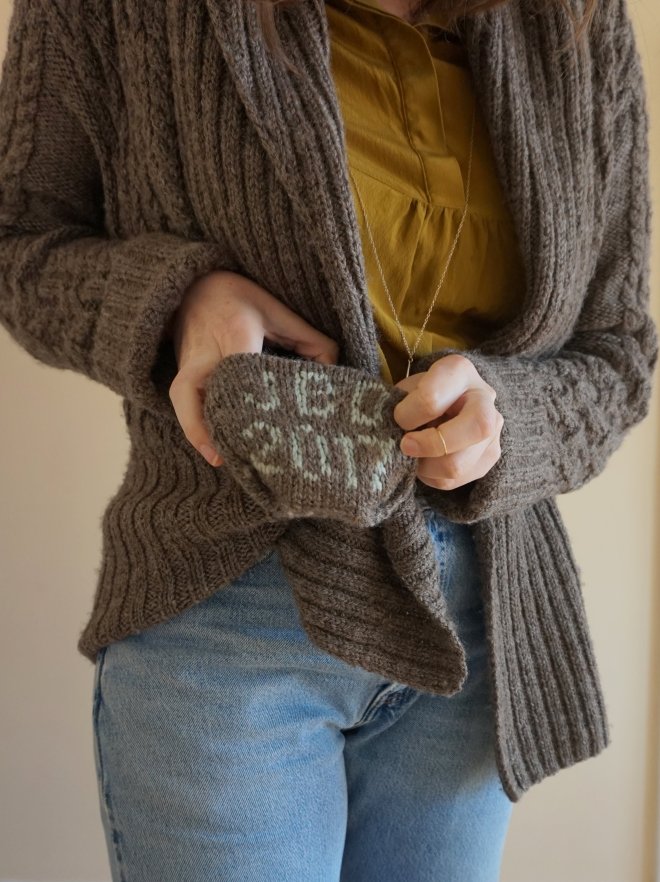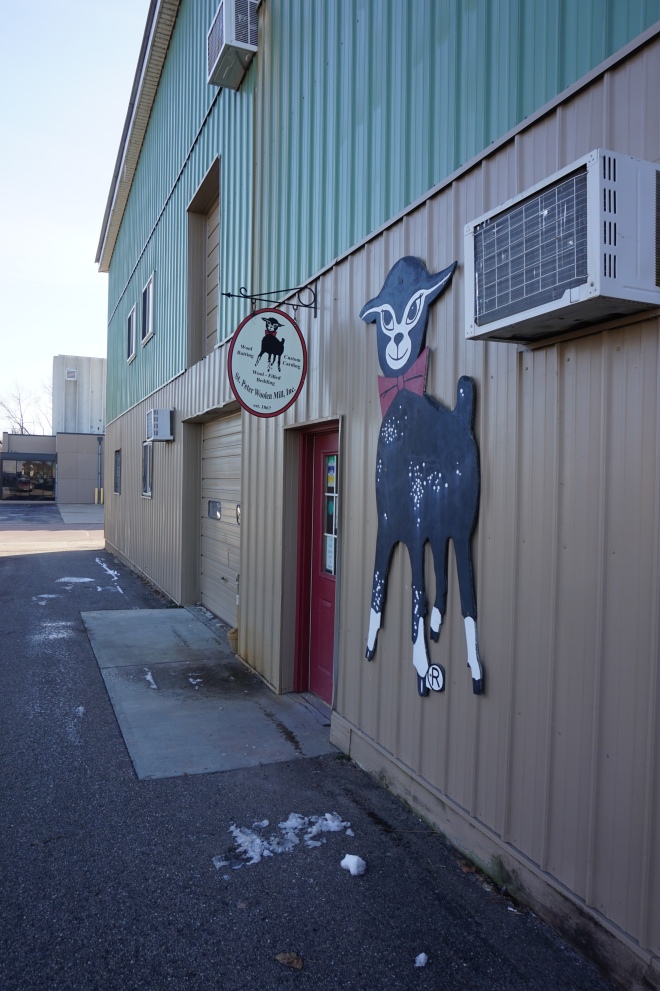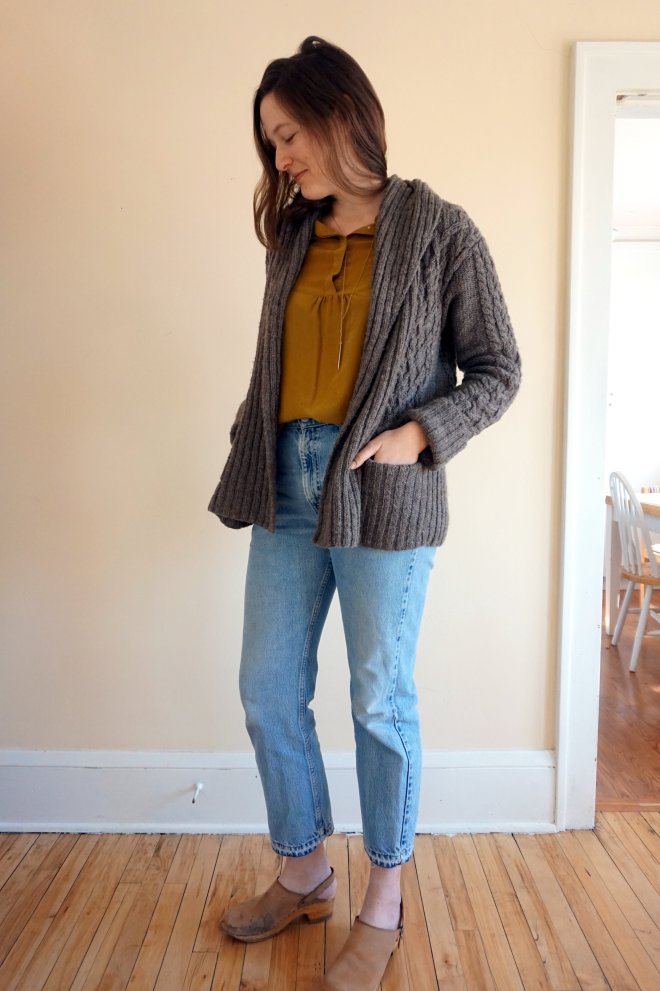
Cabled coziness, fuzzy luxury, place-based wardrobe fulfillment.
I arbitrarily told myself I couldn’t/wouldn’t share photos of my “finished” Exeter cardigan until I finished weaving in the ends. Maybe it was less arbitrary and more motivational (I’m always loathe to weave in ends).
But as soon as I tucked away the most conspicuous yarn ends, I slipped on the sweater for the evening. And then I got up the next day and put it on to fend off the late-winter chill. And then the next day it was really the best fit with my outfit (hallelujah, sleeve and shoulder ease).
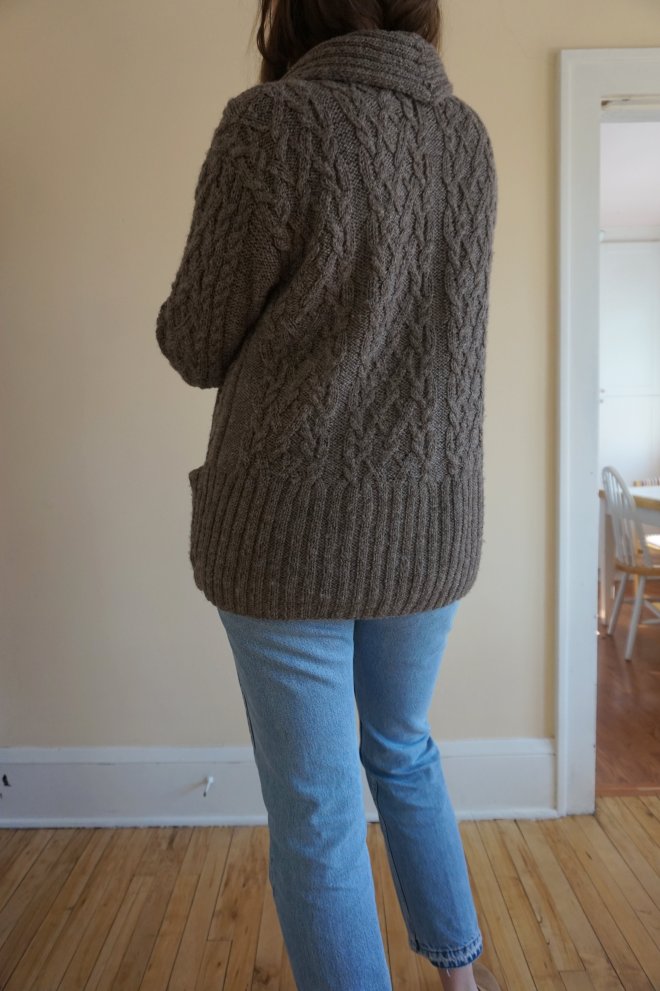
On and on I reached for this cardigan, swaddled myself in it, even traveled with it, for a solid month before finally & reluctantly ending the loose ends.
It still doesn’t have buttons, but I’m calling it good, wearing it while I hunt for button-mates.
The pattern, of course, is Exeter by Michele Wang from the BT Spring Thaw Collection, with full modification notes here. I’m thankful as ever for knitter friends, for real-life sweater try-ons and internet-based helpful hints. The main change I added was length: to the body ribbing, the pockets, and the sleeves.
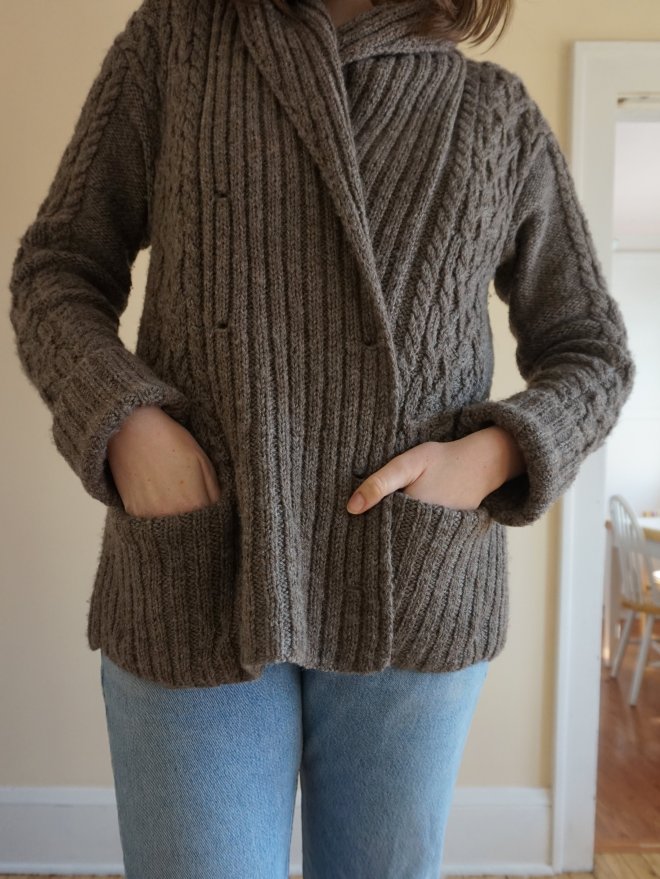
The yarn is a local treat: squishy, lustrous, taupe-y grey wool, purchased at a local festival in spring 2016. It was surprisingly hard to find a full sweater’s worth of yarn from a local farm at this festival that was supposedly all about the shepherds, but I knew I had a winner as soon as I spotted the table piled with this yarn. Simply called Farmgirl Yarns, the label denoted it was raised and spun on-site by English Gardens Fiber Mill in southern Minnesota.
Everything on the table was undyed, with beautiful natural neutrals and subtle variations in grey-brown hues. I gravitated toward this lot immediately. The name: Sylvia. The breed: 1/2 Blue faced Leicester, 1/4 English Leicester, 1/4 Columbia, noted in neat and swirling hand script.
The natural shine of the yarn made the cabling even more addictive, the plump 3-ply showing the texture with distinction. I dutifully swatched and blocked each of the three stitch patterns as called for in the pattern, and the fit is exactly what I wanted — a little bit longer and slimmer (less ease) than the shown on the model, with excellent drape.
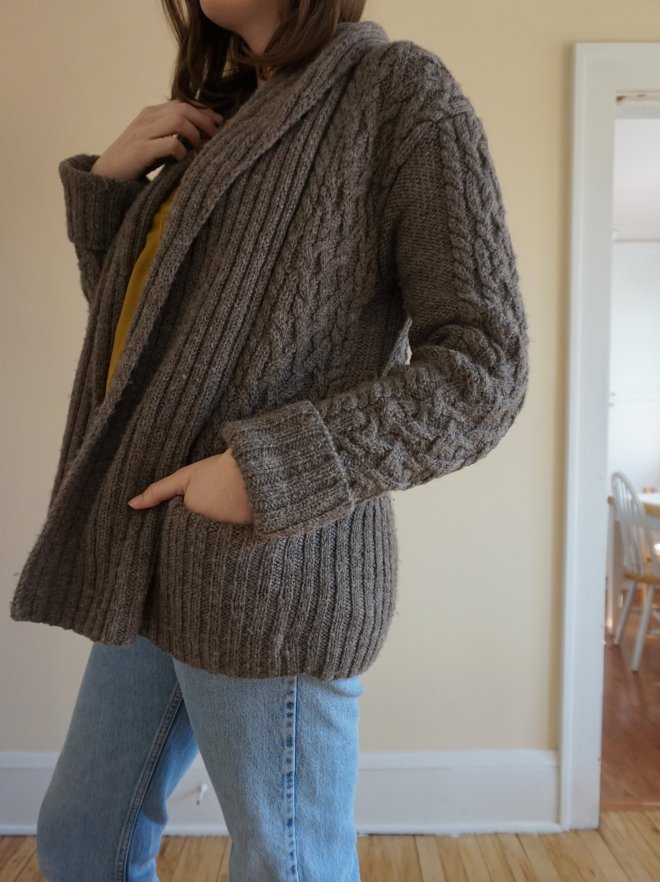
What surprised me, though, is that the yarn is really softening with wear. And by that I mean, it’s already pilling more than any of my other hand knit sweaters. It doesn’t bother me so much as perplexes me, because with the little bit I know about Leicester breeds I had thought they were longwool and thus a heartier fiber. I have a pretty high tolerance for wool, not one who needs merino next to skin, so I thought it would be great to have a cabled cardigan in a more substantial wool that would wear really well.
It wears beautifully in its cozy comfort, sheen, and drape, but it has quite the fuzzy halo when you look up close, and will need regular combing on the sleeves and lower ribbing where the most friction occurs. I had thought that pilling was mostly the result of shorter fibers coming free with wear, and maybe that’s true with this yarn, but I wonder if it’s more due to the construction — a ‘softer’ spin that makes the yarn more open and pliable, thus pillable?
Of course, this will hardly stop me from wearing it, it’s more of an observation and perhaps a consideration for the future to do a bit more of the dirty work with a swatch before casting on a whole sweater. I think Karen was really on to something with that hot tip.
One thing I know for sure I’ll take with me to the next big knit: tucking in my name and date, as noted, a little way to make my mark and meld my work with that of all those in the supply chain, from Sylvia the sheep to the spinnery and the shepherd.
